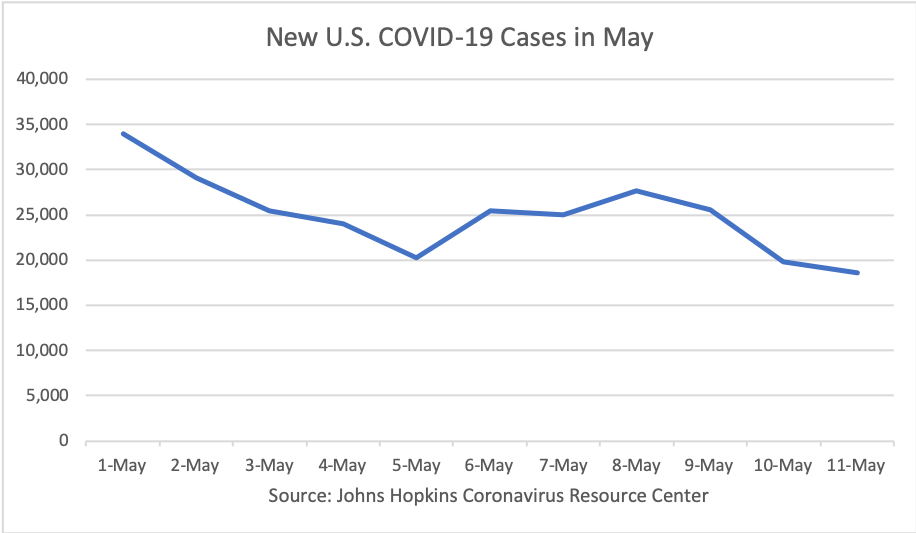Through much of the month of April, the United States was in a frustrating position. The number of new cases of the coronavirus had plateaued but remained stubbornly at about 30,000 a day. This lack of a sustained decline has left many public health officials nervous as states began to ease up restrictions on activity.
But with fingers crossed, it should be noted that the month of May has thus far seen a hopeful trend. On May 11, there were 18,600 new cases, according to the Johns Hopkins University coronavirus tracker. That’s the second straight day that there have been fewer than 20,000 cases — the first time that’s happened since late March. The trend goes back longer than two days, though. The number of new cases has declined for four straight days and has not surpassed 30,000 since May 1.
The news is even more encouraging considering that the U.S. tested about 100,000 more people on May 11 than it did on May 1, according to the COVID Tracking Project — a record 394,711.

A sustained decline would be great news that would provide more of a cushion to states reopening, allowing them to absorb an uptick without being in as much risk of straining medical capacity.
Given the increase in testing and the number of states reopening, many experts have predicted that the number of new cases would start to go up, perhaps significantly. If the numbers decline in the coming weeks as states reopen, that would be quite encouraging. It would mean that taking sensible but less draconian measures are enough to slow the spread, meaning that we can safely move past the harsh lockdown measures that have crippled the economy and strained people’s nerves.
It would obviously be more reassuring to see a more significant and sustained decline. And those numbers can spike back up at any time. But for now, I’ll take positive news when I can get it.

